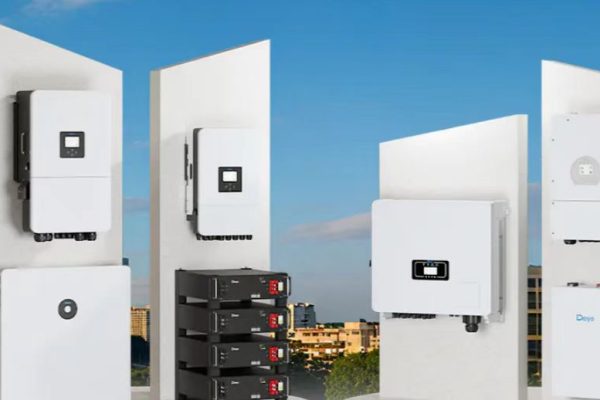Practical Guide for EPCs, Distributors, and Technical Buyers
For light commercial and institutional solar+storage projects, especially in the 10kW to 50kW range, proper wiring diagrams are critical for both project execution and after-sales troubleshooting. A good wiring diagram helps you communicate clearly with installers, avoid errors during commissioning, and support system longevity.
This article outlines the essential wiring diagrams you should prepare or request when working on hybrid PV+ESS systems in this size bracket.
📐 Why Wiring Diagrams Matter in Small C&I Projects
In projects where the inverter is paired with batteries, loads, and grid or genset, the margin for error is low. A missing or unclear diagram can cause:
- Improper grounding or phase imbalance
- Reverse polarity damage
- Poor load transfer under outage
- Communication failures among devices
Whether you’re an SME EPC, distributor, or system integrator, having the right wiring documents speeds up fieldwork and improves system reliability.
🧩 Core Diagrams You’ll Need
1. Single-Line Diagram (SLD)
Also called a “one-line diagram,” this is the top-level blueprint that shows:
- Solar PV input
- Hybrid inverter
- Battery bank
- Grid/genset input
- AC loads
- MCBs / disconnects / SPD positions
✅ What to include:
- Voltage levels (DC and AC)
- Breaker ratings
- Cable specs (e.g., 4mm² for PV, 16mm² for AC)
- Direction of current flow
- Labels like “to critical loads” / “non-critical loads”
📌 This is the minimum required diagram for any 10–50 kW hybrid project.
2. Three-Line AC Wiring Diagram
For systems with three-phase output, this diagram shows how:
- Each AC line (L1, L2, L3) connects to the loads or ATS
- Neutral and PE are handled
- Phase balancing is managed
This is especially important when:
- Loads are spread across multiple buildings
- There’s a diesel generator connected
- Grid is unstable or has low power quality
Tip: Label voltage measurement points for easier commissioning later.
3. Battery Bank Wiring Diagram
If you’re supplying multiple battery modules, include:
- Series/parallel connection logic
- Polarity (highlight negative bus bar!)
- Battery breaker or fuse
- BMS communication link (CAN, RS485)
- Rack ID / battery cabinet number if applicable
📍 Critical in systems with:
- 48 V or 100 V nominal setups
- LFP or NMC chemistry
- Parallel inverter configurations drawing shared current
4. PV String Wiring Plan
- Show how many strings per MPPT
- Series module count per string
- Combiner box layout (if used)
- String fuses or SPD locations
- Grounding of PV frames
This helps prevent:
- MPPT overload
- Voltage mismatch
- Incorrect polarity or underutilization
Useful when using multi-MPPT hybrid inverters (e.g., 2–4 inputs).
5. Communication Wiring Diagram
Include:
- CAN / RS485 wiring between inverter and BMS
- WiFi / Ethernet port usage
- Address or ID assignments (e.g., BMS #1 = 0x01)
- Connection to EMS or monitoring platform
📌 Recommend shielded twisted-pair cable for RS485 in long runs.
6. Grounding and Lightning Protection Schematic
You should include:
- PV panel frame grounding
- Inverter chassis grounding
- SPD grounding
- Earth rod layout and bonding
If using a metal battery rack, ground it too. In humid or tropical regions, grounding strategy is critical.
🧰 Optional but Useful Diagrams
| Diagram Type | When to Include |
|---|---|
| ATS Logic Diagram | If using auto-transfer switch |
| Load Prioritization Wiring | For sites with critical vs. general load |
| Generator Sync Schematic | Where genset is backup or input source |
| Remote Monitoring Cable Layout | If commissioning team is off-site |
🔧 Real-World Advice from Small Project Deployments
- Always customize per inverter model—not all wiring ports are the same
- Include manufacturer-supplied pinouts when sharing RS485/CAN diagrams
- Use color-coded wires and consistent labels across all diagrams
- For field teams: print laminated copies and send softcopies to mobile devices
- Add QR codes to diagrams linking to datasheets or manuals
📄 Final Deliverables Checklist
Make sure each project file includes:
✅ Single-line diagram (SLD)
✅ Battery wiring diagram
✅ PV string layout
✅ Communication schematic
✅ AC load wiring and grounding
✅ Labels and connector types
🔚 Good Diagrams = Faster Projects
In the 10–50 kW range, clear wiring diagrams act as the bridge between design and execution. They allow even modestly experienced field teams to wire and commission faster, reduce support calls, and simplify post-sales service.
As a technical trader or EPC, offering pre-drawn wiring packages can become a value-added service that sets you apart—even if you’re not the installer.









